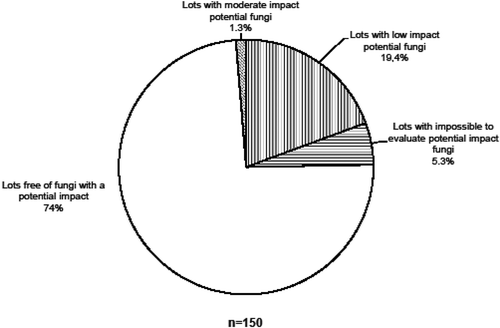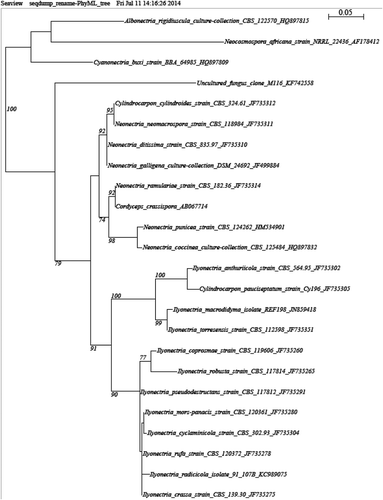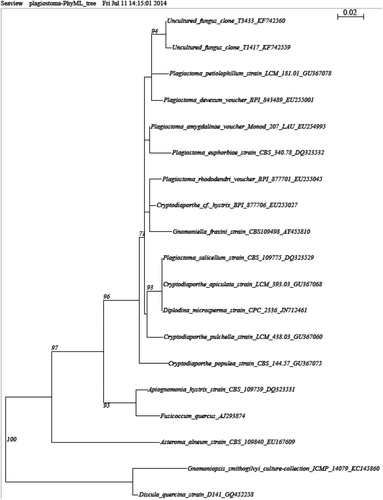Figures & data
Table 1. Exotic fungi found on live plant material imported into Canada. Incidence of fungal clones of each OTU representing a potential risk for Canadian forests with year of collection, host, country of origin, best BLAST match, putative identification and risk assessment.
Fig. 1 Percentage of imported live plant material with low to moderate potential impact on Canadian forests.

Fig. 3 Incidence and potential impact on Canadian forests of fungal clones found on imported live plant material.

Fig. 4 Phylograms of best trees obtained by ML from ribosomal ITS sequences of the top two fungal taxa identified as having a moderate potential impact. Support values are provided only for nodes that received ≥70% ML bootstrap. Trees are drawn to scale, with branch lengths measured in the number of substitutions per site. Taxa are identified next to the branch by their genus and species names, culture identification and GenBank accession number. a, Nectriaceae sp. 1, b, Plagiostoma sp. 1.



